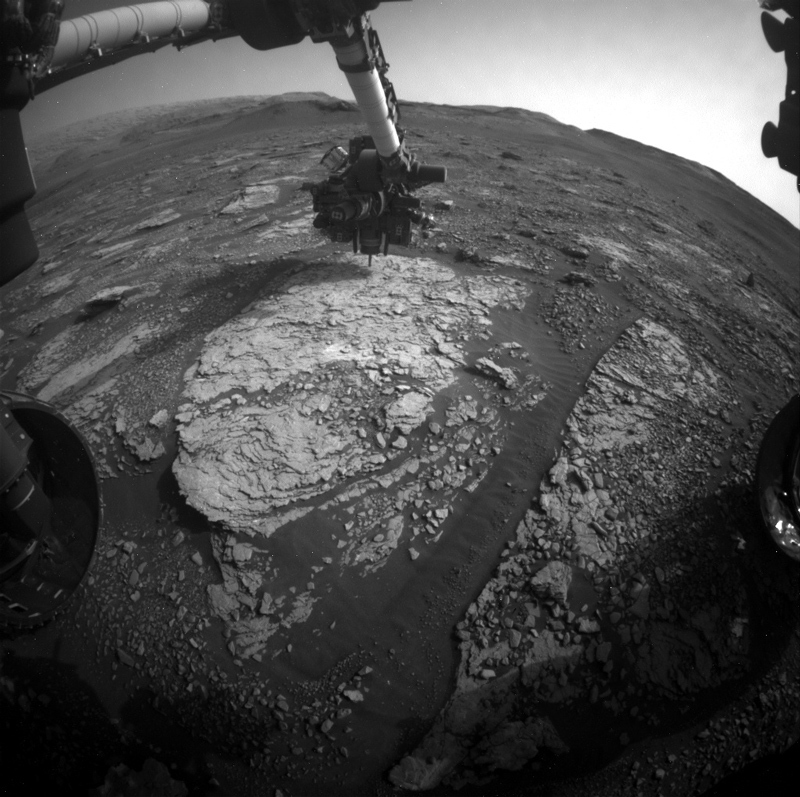3 min read

Curiosity is still at the "Mary Anning" drill location, investigating the chemistry and sedimentary structures in this vicinity. As we continue to dig into the science at this location, the team is having some fun with naming targets. Today the team decided to name a nearby ChemCam target “Tray,” after paleontologist Mary Anning’s faithful dog who helped her with fossil hunting. But as one team member pointed out, while it might be the dog days of summer for those of us in the northern hemisphere on Earth, it’s actually the dog days of spring for Curiosity in the southern hemisphere of Mars!
Today was an extra big weekend plan in which we planned 4 sols instead of the usual 3, because we gave up our uplink on Monday so that DSN could support the Mars 2020 and Emirates Mars Missions that are en route to Mars. While we prepare SAM to do a wet chemistry experiment on the next drill sample, we had even more time for science activities today!
The first sol of this 4-sol plan kicks off with a midday science block for Mastcam deck monitoring, a change detection observation of some nearby ripples, and a Mastcam mosaic to document local troughs and patterned ground. In the evening ChemCam planned a dark spectra experiment, which is a nighttime test for the CCD dark level. The second sol includes a ChemCam passive observation of the sky to assess water vapor and dust in the atmosphere, along with several other environmental monitoring activities to characterize atmospheric opacity, search for clouds, and constrain aerosol scattering. The third sol starts with a big science block, including a Mastcam multispectral observation of the second site that we plan to drill at Mary Anning, a few different change detection observations of ripples and troughs, ChemCam observations of bedrock targets “Tain” and “Tray,” and additional environmental observations. Then MAHLI will image some dark nodules at the target “Falkirk Wheel” and APXS will investigate its chemistry. Early in the morning of 2863 Curiosity will conduct more atmospheric monitoring with Mastcam and Navcam, and then most of the 4th sol will be devoted to REMS observations. Throughout the plan there are also a number of MARDI change detection activities to try to better constrain when the wind is moving sand grains around.
And speaking of the dog days of summer here in Flagstaff, I write this as my dog is curled up on my feet under the desk, assisting me with my duties as SOWG Chair today. Telework does have its perks!
Written by Lauren Edgar, Planetary Geologist at USGS Astrogeology Science Center







